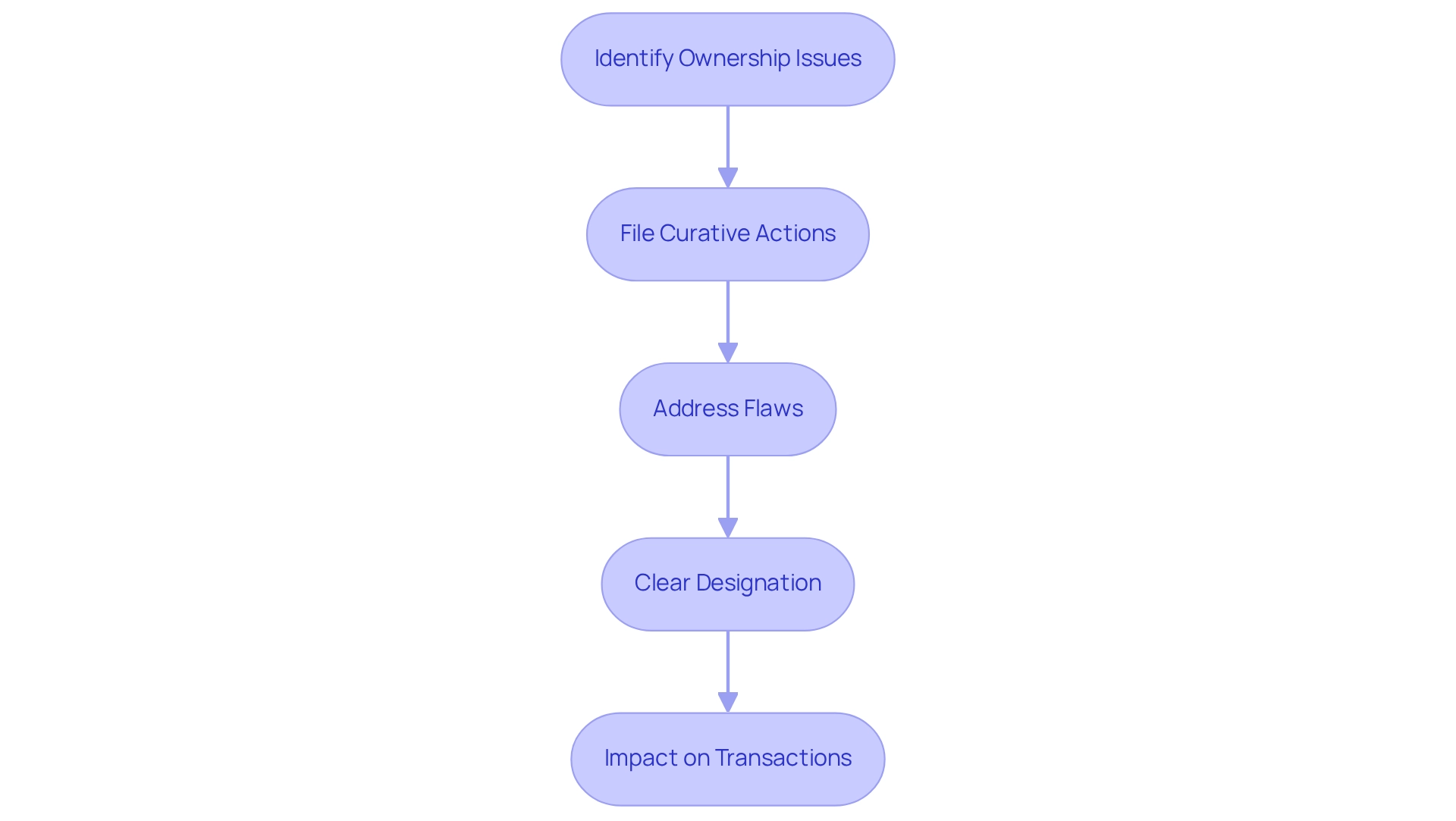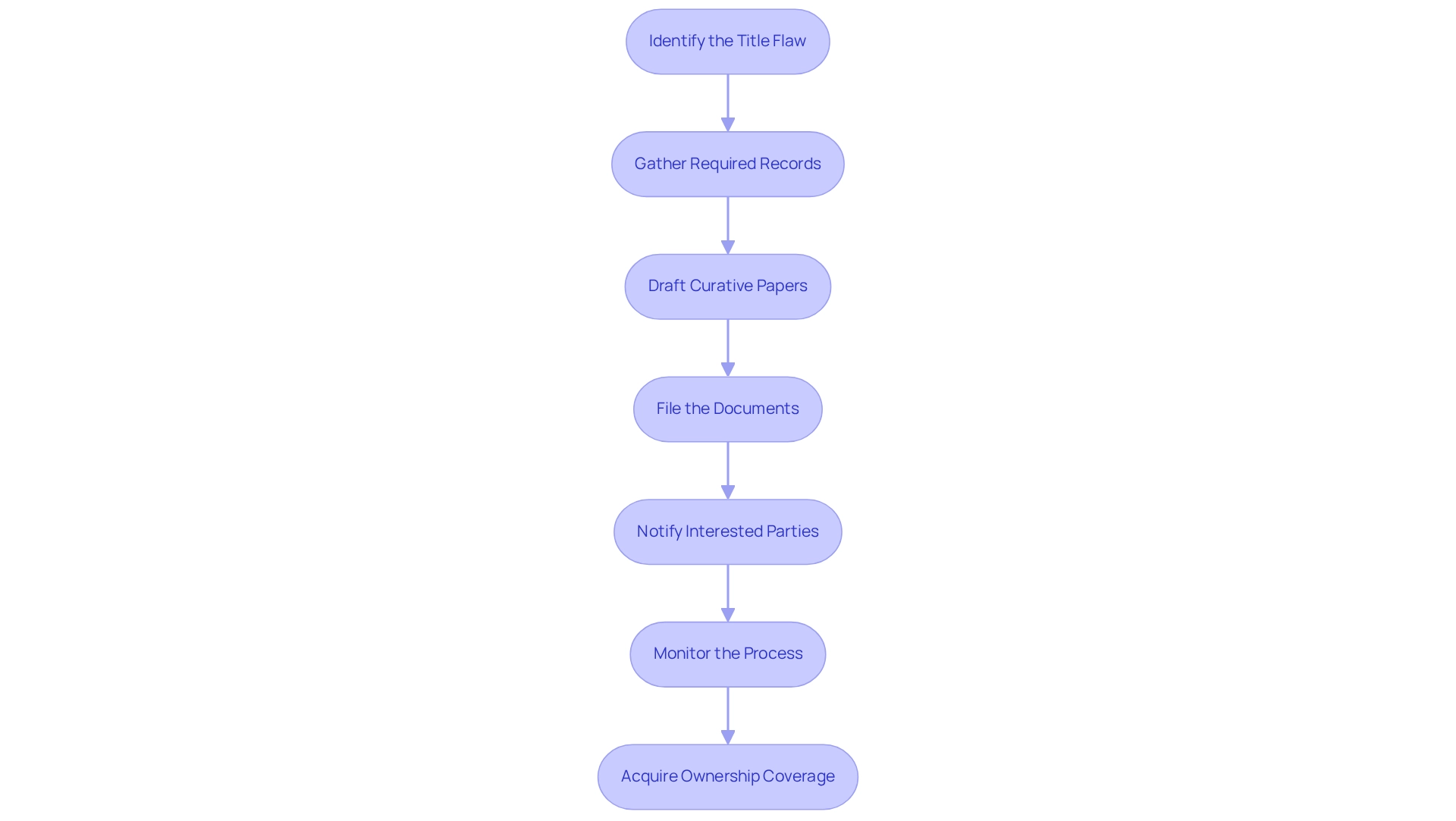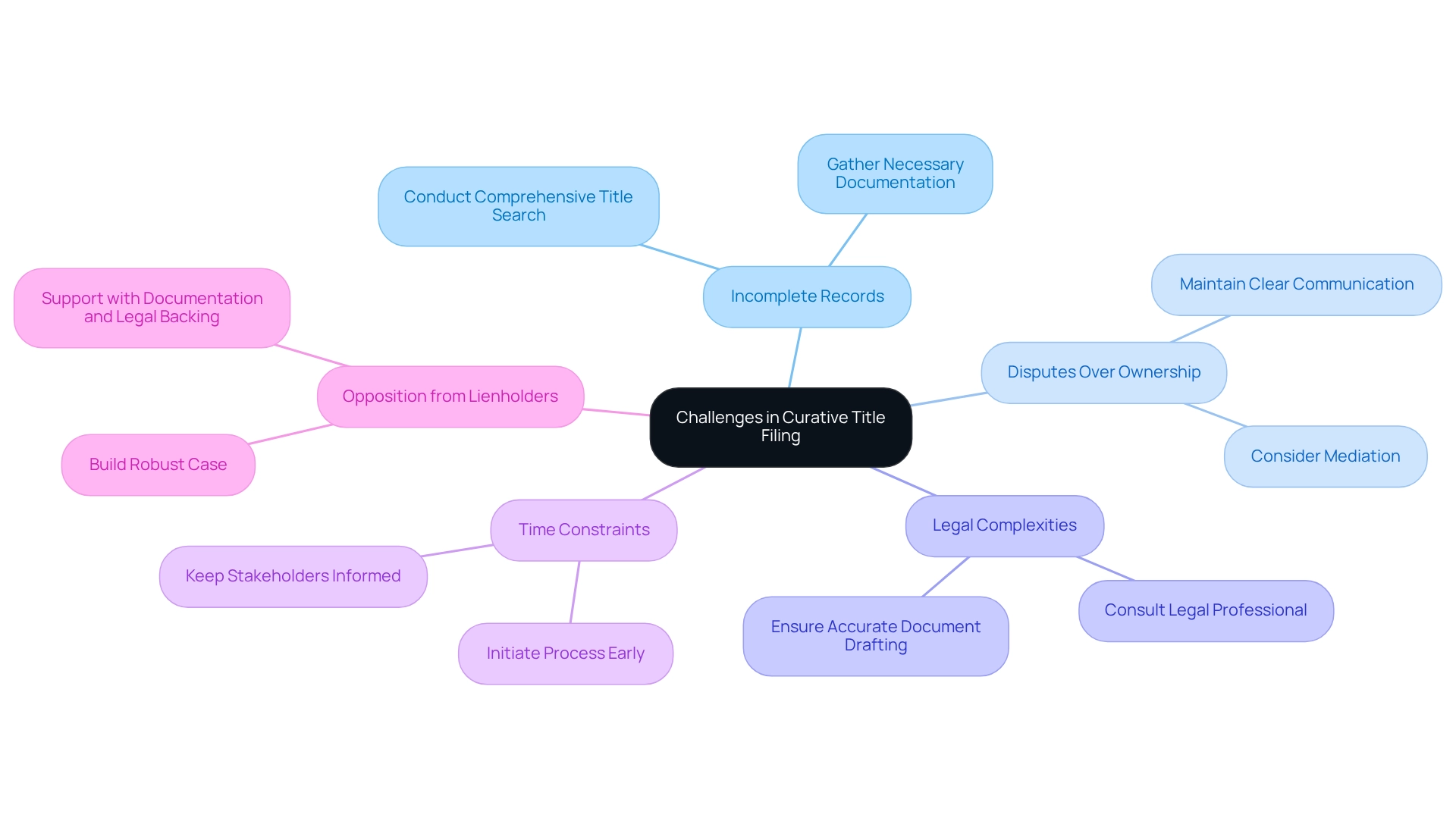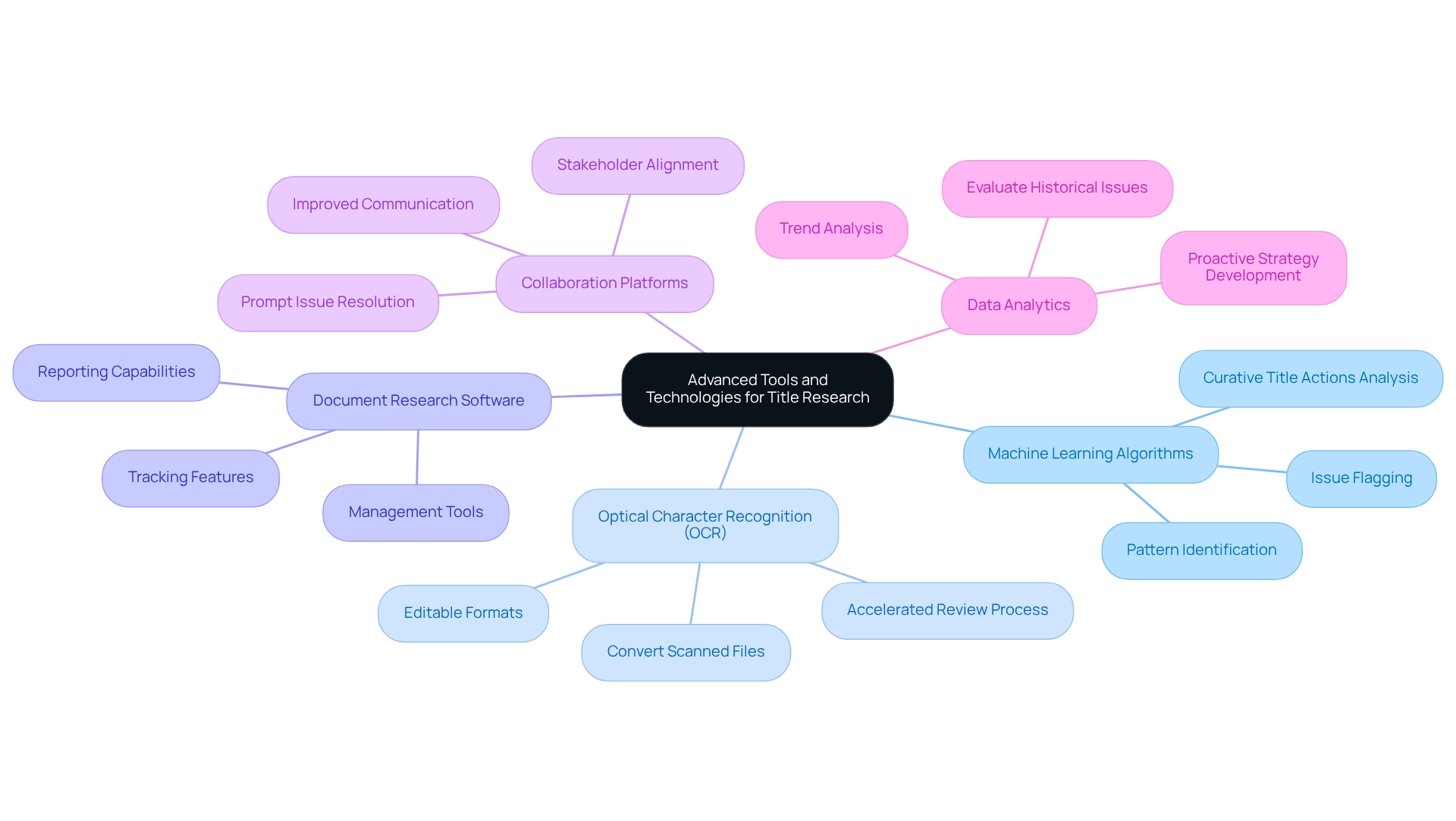Overview
Curative title actions are initiated through a systematic process that involves:
- Identifying title flaws
- Gathering necessary records
- Drafting legal documents
- Filing them with the appropriate authorities
- Notifying interested parties
- Monitoring the process until ownership coverage is secured
This step-by-step approach underscores the critical importance of addressing ownership issues to ensure clear property titles. By facilitating smooth real estate transactions, it ultimately protects all parties involved.
Introduction
In the intricate world of real estate, the clarity of a property title is paramount; it can make or break a transaction. Curative title actions are essential in rectifying defects that could impede the sale or financing of a property.
These legal processes not only ensure that ownership remains undisputed but also safeguard the interests of buyers and facilitate the underwriting process for title insurance.
As the industry evolves, real estate professionals must adeptly navigate the complexities of title issues with efficiency and expertise. By comprehending the step-by-step process of filing curative actions and leveraging advanced technologies, stakeholders can effectively overcome common challenges and streamline their operations, ultimately enhancing their capacity to close deals successfully.
Understand Curative Title Actions and Their Importance
Curative ownership procedures represent legal methods employed to rectify flaws or issues in a property deed that may hinder its marketability. These measures are vital for ensuring that the designation is clear and devoid of any encumbrances, such as liens or ownership disputes. Understanding how curative title actions are filed is crucial for real estate professionals, as this knowledge directly influences their ability to complete transactions smoothly. A clear designation not only protects the purchaser's investment but also streamlines the underwriting process for insurance firms, enabling them to issue policies without reservations.
With over 50 years of industry experience, Parse AI leverages its expertise and cutting-edge technology to facilitate the curative process, empowering real estate professionals to address ownership issues more effectively. Our platform offers innovative tools designed to swiftly identify and rectify ownership defects, ultimately safeguarding the interests of all parties involved in a real estate transaction while enabling them to benefit from the solutions provided by Parse AI.

Follow the Step-by-Step Process for Filing Curative Title Actions
-
Identify the Title Flaw: Begin with a thorough examination of ownership records to uncover any flaws or issues that demand attention. This includes identifying liens, easements, or discrepancies in ownership records.
-
Gather Required Records: Assemble all relevant documents that substantiate your claim, such as previous deeds, affidavits, and any correspondence connected to the ownership dispute.
-
Draft Curative Papers: Prepare the essential legal documents to rectify the ownership flaw. This may involve corrective deeds, affidavits, or other legal instruments that clarify ownership or resolve disputes.
It is important to understand how curative title actions are filed.
-
File the Documents: Submit the drafted corrective documents to the appropriate county recorder's office or court, based on how curative title actions are filed and the specific nature of the title defect.
-
Notify Interested Parties: Inform all stakeholders in the property, including lienholders or co-owners, regarding the remedial actions being undertaken.
-
Monitor the Process: Track the filing process and ensure that all necessary steps are completed. Follow up with the recorder's office or court to confirm that the corrective measures have been successfully implemented.
-
Acquire Ownership Coverage: Once the curative actions are finalized, seek ownership coverage to protect against any future claims related to the defect.

Identify and Overcome Common Challenges in Curative Title Filing
-
Incomplete Records: One of the most frequent difficulties encountered is the presence of incomplete or absent paperwork. To overcome this challenge, it is imperative to conduct a comprehensive title search and gather all necessary documentation to understand how curative title actions are filed.
-
Disputes Over Ownership: Discrepancies in ownership can lead to significant disputes. To effectively address this issue, maintain clear communication with all involved parties and consider mediation when necessary.
-
Legal Complexities: The legal terminology found in remedial papers can often be challenging to navigate. It is advisable to consult with a legal professional who specializes in real estate to ensure that all documents are accurately drafted.
-
Time Constraints: The healing process can be protracted, potentially delaying transactions. To mitigate this, initiate the process as early as possible and keep all stakeholders informed of timelines and progress.
-
Opposition from Lienholders: Occasionally, lienholders may oppose remedial measures. Building a robust case supported by documentation and legal backing can significantly aid in persuading them to cooperate.

Utilize Advanced Tools and Technologies for Efficient Title Research
-
Machine Learning Algorithms: Implement machine learning techniques to swiftly analyze extensive sets of title data. These algorithms are adept at identifying patterns and flagging potential issues that may necessitate understanding how curative title actions are filed.
-
Optical Character Recognition (OCR): Employ OCR technology to convert scanned files into editable and searchable formats. This advancement significantly accelerates the review process of ownership papers and the extraction of pertinent information.
-
Document Research Software: Invest in specialized document research software that integrates various tools for management, tracking, and reporting. Such software streamlines the entire research process, enhancing precision and efficiency.
-
Collaboration Platforms: Leverage collaboration tools to improve communication among team members and stakeholders involved in the research process. This approach ensures alignment and facilitates prompt resolution of issues.
-
Data Analytics: Utilize data analytics to evaluate historical title issues and trends. This capability aids in predicting potential challenges and preparing proactive strategies for how curative title actions are filed.

Conclusion
Curative title actions are essential in guaranteeing that property titles are clear and marketable, thus facilitating smooth real estate transactions. It is vital for real estate professionals to understand the step-by-step process of identifying and rectifying title defects. By gathering the necessary documentation, drafting appropriate legal instruments, and effectively communicating with all interested parties, stakeholders can navigate potential challenges with greater ease.
Furthermore, the journey does not end there. Utilizing advanced tools and technologies can significantly enhance the efficiency of title research. From machine learning algorithms to specialized software, these innovations allow for quicker identification of issues and streamlined document management. By embracing these technologies, real estate professionals can not only overcome common obstacles but also save valuable time and resources.
In conclusion, the importance of curative title actions cannot be overstated. They safeguard the interests of buyers, streamline the underwriting process for title insurance, and ultimately contribute to successful property transactions. As the real estate industry continues to evolve, staying informed and adaptable to these processes and technologies will empower professionals to close deals with confidence and reliability.
Frequently Asked Questions
What are curative title actions?
Curative title actions are legal methods used to rectify flaws or issues in a property deed that may hinder its marketability.
Why are curative title actions important?
They are vital for ensuring that property designations are clear and free of encumbrances, such as liens or ownership disputes, which protects the purchaser's investment and streamlines the underwriting process for insurance firms.
How do curative title actions impact real estate transactions?
Understanding how curative title actions are filed is crucial for real estate professionals, as it directly influences their ability to complete transactions smoothly.
What role does Parse AI play in curative title actions?
Parse AI leverages over 50 years of industry experience and cutting-edge technology to facilitate the curative process, helping real estate professionals address ownership issues more effectively.
What tools does Parse AI offer for curative title actions?
Parse AI provides innovative tools designed to swiftly identify and rectify ownership defects, safeguarding the interests of all parties involved in a real estate transaction.




